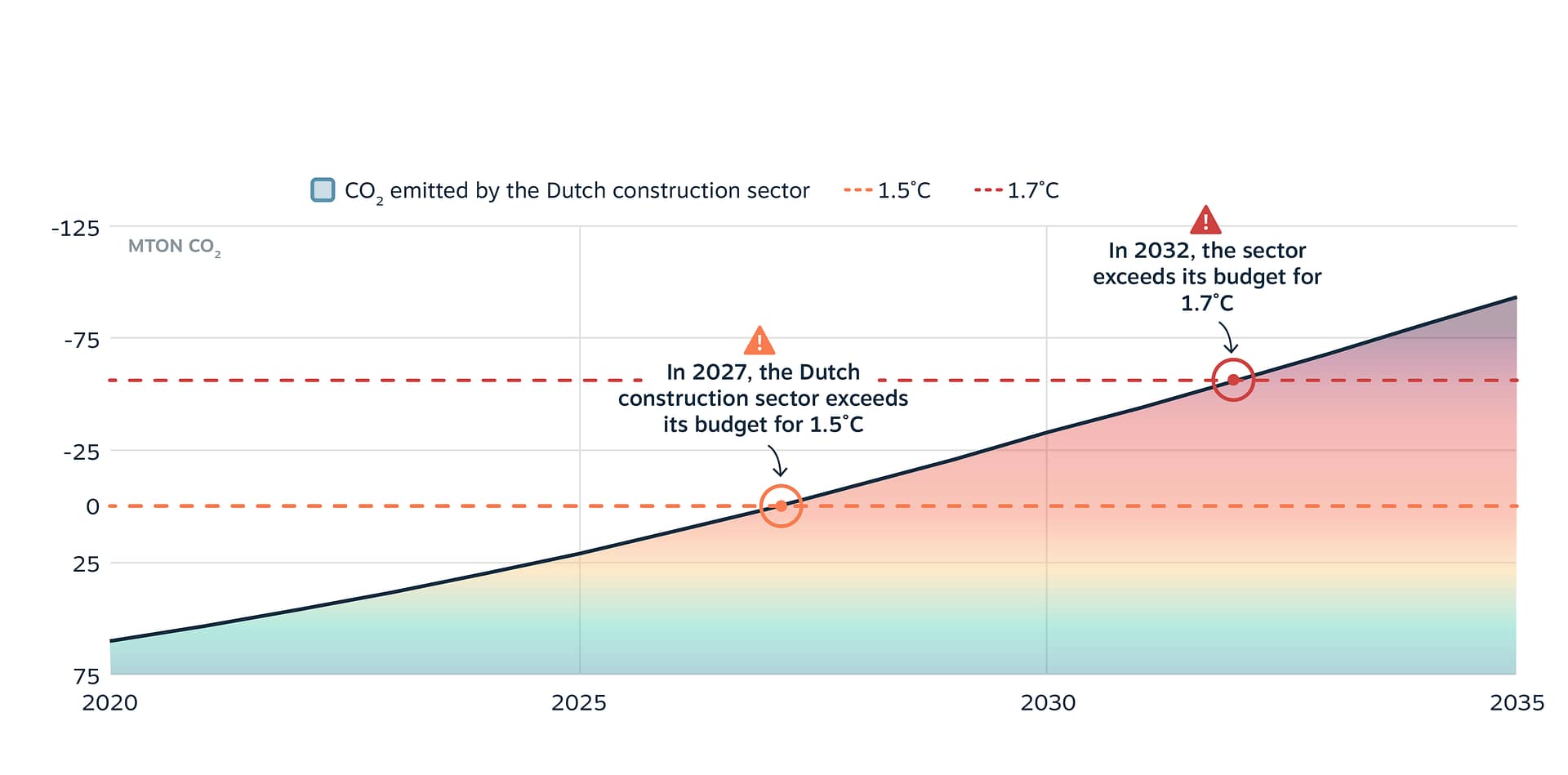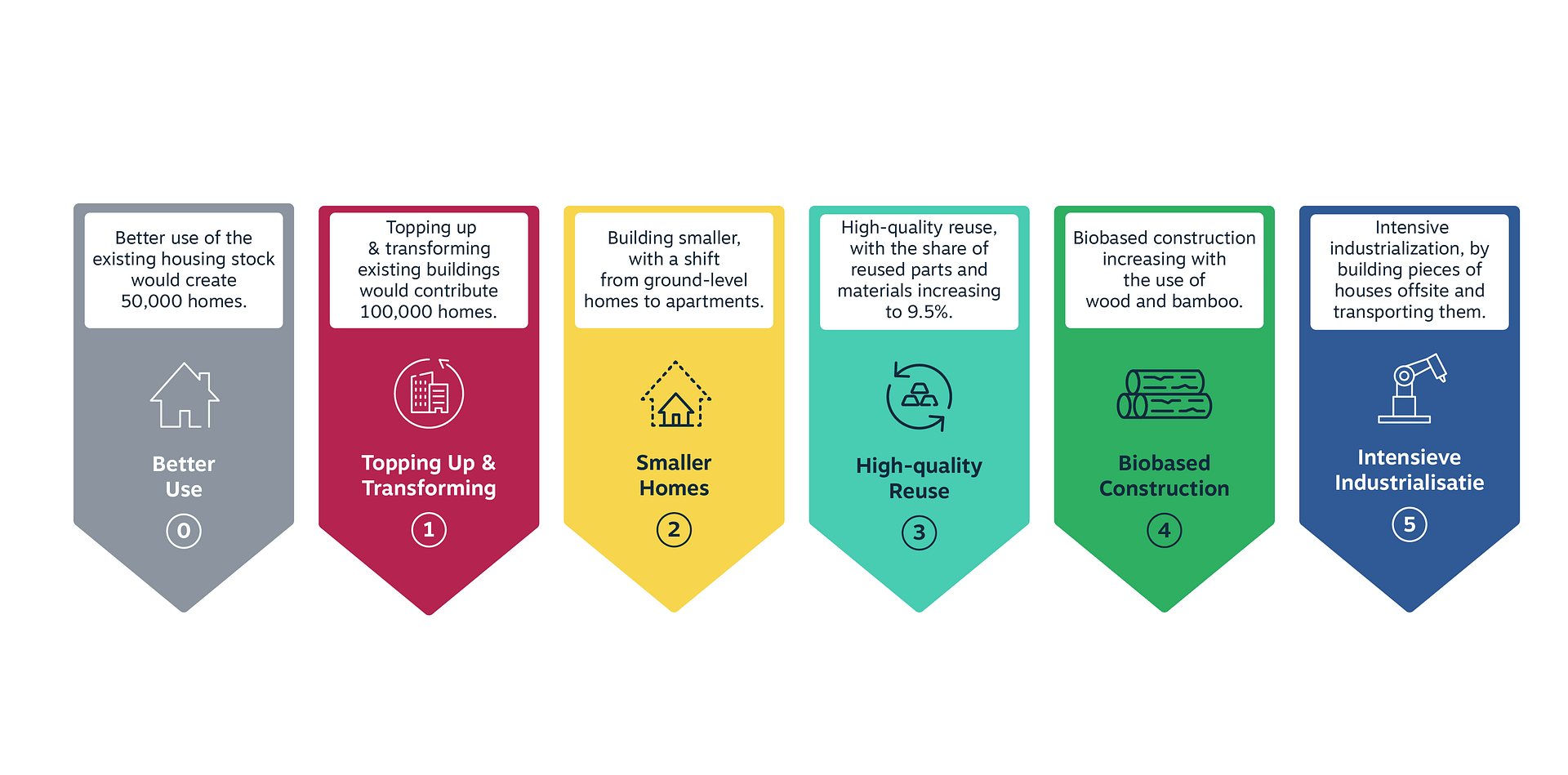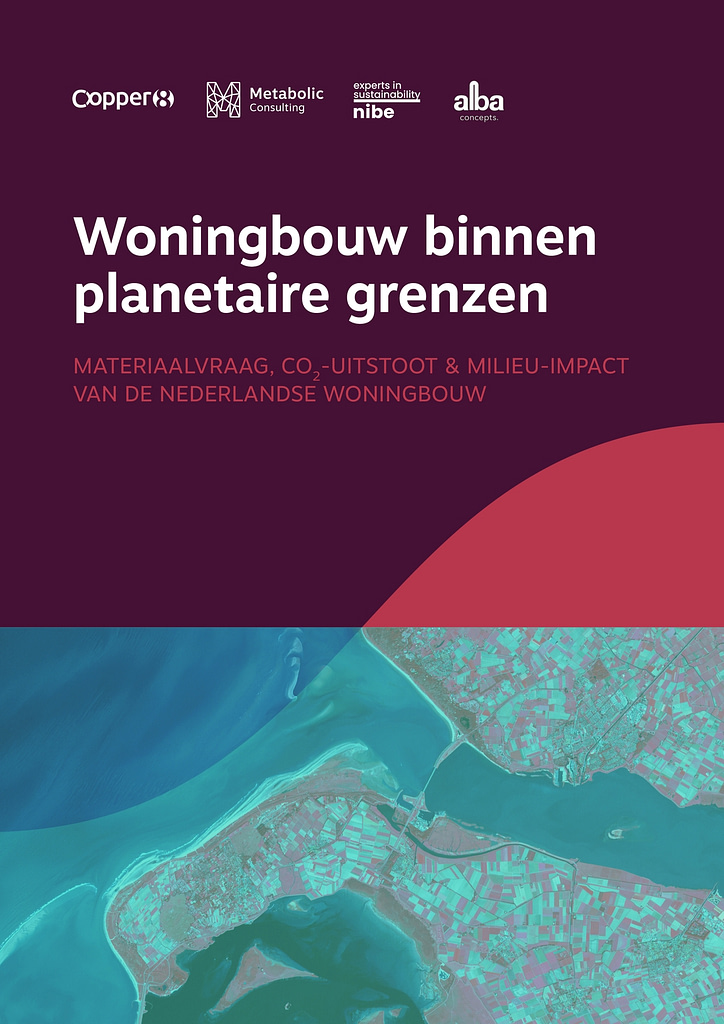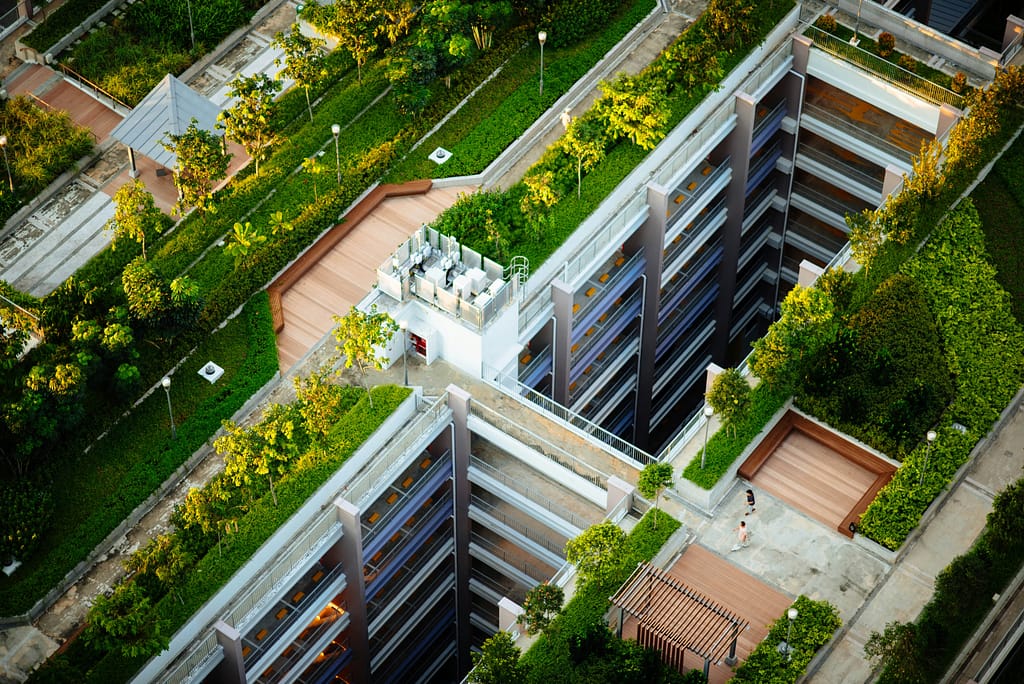Materiaalvraag: The environmental impact of residential construction in the Netherlands
Strategies to reduce the use of materials, CO2 emissions, and environmental impact in Dutch housing construction
In this project, Metabolic analyzed the use of materials, CO2 emissions, and the environmental impact of the residential construction sector through 2030. The country needs hundreds of thousands of new homes to alleviate housing shortages, yet construction is responsible for a significant environmental impact. We suggested several strategies that would reduce emissions and stay within planetary boundaries.
- Partner:NIBE, Copper8, and Alba Concepts
- Client:TKI Bouw & Techniek, Ministerie van Binnenlandse Zaken, and TNO
- Date: November 2022 – May 2023
The housing crisis versus the climate crisis
The residential construction sector has a large environmental and social impact, and tensions between large societal challenges are reflected in this sector. On the one hand, the Netherlands aims to construct 100,000 dwellings annually to reduce the housing shortage and provide a comfortable living space for everybody. On the other hand, there are ambitious goals for 2030 in terms of climate change (55-60% CO2-reduction of greenhouse gas emissions), circular economy (50% less environmental impact of construction materials), and nitrogen (50% less nitrogen emissions). We were asked to calculate the material demand and environmental impact of the Dutch housing construction sector through 2030, including strategies for how to reduce material and CO2.
Modeling “business-as-usual” versus six reduction strategies
If the construction sector continues to build houses as it is currently doing, the material demand and environmental impact of the sector will increase due to the continuously increasing demand for more housing. Therefore, we modeled six strategies where both the material demand and the environmental impact could be reduced. The six reduction strategies are: making better use of the existing housing stock, transforming and building on rooftops, building smaller, high-value reuse, biobased building, and intensive industrialization.
Key strategies: Transformation, Building Smaller, and Biobased building
Of the six reduction strategies, three stand out in terms of emission reduction:
- Transforming offices to housing units and building smaller housing could lead to CO2 emissions reductions of 10% and 8% respectively.
- Building more biobased houses (up to 50% of single-family homes and 30% of apartments) could further reduce CO2 emissions by 6%.
The results were presented during the 2023 week of the circular economy in The Netherlands in CIRCL, Amsterdam.






“The only way we can meet the Dutch climate goals is by looking at the building sector through the lens of the materials it uses and the demands it creates on planetary resources.”
Nico Schouten, Metabolic Built Environment team lead
Director of Sustainable Cities & Regions
ANY QUESTIONS?
For more information about this project, please get in touch.






